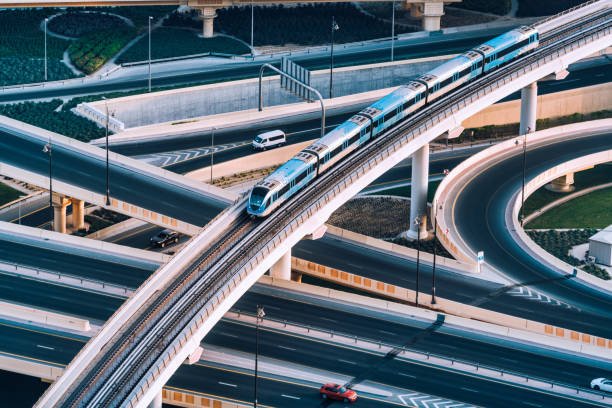On this page, we discuss various theories of rail transport and articulate the historical context in which these were developed.
Rail transport is a fundamental mode of land transportation that has played a vital role in industrialization and development around the world. Trains, tramways, and metro systems are examples of rail transport systems that have been built to cater to different needs over the years. This essay explores various theories related to rail transport, each developed in response to distinct historical contexts, spanning from the steam revolution of the 19th century to the high-speed rail systems of the 21st century.
Rail Transport: Theories and Their Historical Context
The Birth of Railways: Innovation Theory
In the context of the early 19th century, the theory of railway transport emerged due to the need for faster and more efficient modes of transportation. The Innovation Theory applies here, as it posits that the adoption of a new technology occurs when it provides a significant advantage over existing systems. In this case, the invention of steam engines for rail transport was driven by the industrial revolution’s need for the quick movement of goods and people. George Stephenson, the “father of railways,” made significant strides in railway technology, culminating in the development of the Locomotion No. 1 in 1825, marking the advent of railway transport.
National System Networks Theory
The late 19th and early 20th centuries saw the development of national rail networks, with countries like the United States, Great Britain, and Germany playing leading roles. This period is well illustrated by the Network Theory, which emphasizes the efficiency gains from connecting separate routes into a coordinated system. The development of nationwide rail networks not only stimulated economic growth by facilitating trade but also encouraged regional integration, strengthening national unity. The Transcontinental Railroad, for instance, united the U.S.’s east and west coasts, fostering the country’s westward expansion and rapid industrial growth.
Electrification and Speed: Modernization Theory
The 20th century ushered in the Modernization Theory, positing that societies progress from ‘traditional’ stages to ‘modern’ ones through technological advancements. Electric trains became the symbol of this new era, significantly enhancing speed, reducing emissions, and improving efficiency. The Japanese Shinkansen, launched in 1964, epitomizes this shift, being the first high-speed rail system, showcasing how modern technology could revolutionize rail transport.
Sustainable Transportation: Ecological Modernization Theory
By the late 20th and early 21st centuries, environmental concerns became prominent, leading to the rise of Ecological Modernization Theory. This theory proposes that environmental protection and economic growth are not contradictory but can be integrated. In the context of rail transport, this has meant a shift towards more sustainable practices, such as energy-efficient trains, electrification, and the use of renewable energy sources. High-speed rail networks like France’s TGV and China’s expansive HSR network, which provide efficient and environmentally friendly alternatives to air and road transport, illustrate this trend.
Urbanization and Mass Transit: Theory of Transit-Oriented Development
As urban populations expanded in the late 20th and early 21st centuries, the Theory of Transit-Oriented Development emerged. This theory suggests concentrating high-density development around public transport hubs to minimize the use of private cars and promote sustainable urban growth. Metro systems worldwide, such as London’s Underground and New York’s Subway, have become essential to manage urban mobility effectively and reduce traffic congestion.
Conclusion
The evolution of rail transport illustrates how different theories and technological advancements have been realized in different historical contexts. From the steam revolution that initiated rail transport to the high-speed, efficient, and sustainable railway systems of today, rail transport continues to be a key driver of economic growth, regional integration, urban development, and environmental sustainability.

